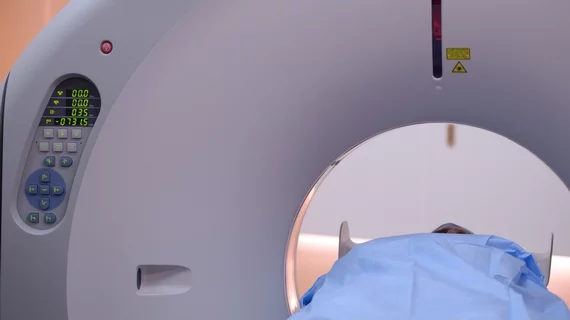A patient-centric, personalized approach to contrast administration in CT imaging that balances contrast dose with radiation dose may enhance patient safety and maintain high-quality diagnostics, according to an editorial published Aug. 3 in the Journal of the American College of Radiology.
Although innovations and clinical strategies have helped optimize scan protocols and radiation doses in accordance to a patient’s size, body regions and clinical indication, lead author Mannudeep Lakra, MD, an assistant radiologist in the Divisions of Thoracic and Cardiac Imaging at Massachusetts General Hospital, and colleagues explained that efforts to adapt contrast media administration to these factors are lacking.
“Optimized patient-centric contrast-enhanced CT (CE-CT) scan protocols shift focus from fixed radiation and contrast doses regardless of an individual patient profile to more patient-specific techniques,” Lakra et al. wrote. “Such individualized contrast dosing should account for patient size–specific factors such as body mass index (BMI), body surface area, height, and body weight.”
To better balance these parameters that can help develop a patient centered approach for optimizing contrast and radiation doses, Lakra and colleagues said that the first step is for medical imagers to determine whether a lower contrast dose or a lower radiation dose takes priority.
In the case a lower contrast dose being the most important, such as for patients with compromised renal functions or those at greater risk for Cervical intraepithelial neoplasia (CIN), scan techniques should be modified to obtain diagnostic information with a lower contrast volume.
On the other hand, if a lower radiation dose is determined priority as is common for pediatric patients who do not have normal renal functions and do not show risk factors for CIN, the researchers suggest iterative reconstruction—use of low tube potential or dual-energy CT (DECT) in high iodine enhancing exams—and high contrast enhancement to help reduce radiation exposure.
Once priority is determined, the next step is to tailor iodine delivery rate (IDR), injection flow rate and total iodine load for each patient, according to the researchers. Lastly, the researchers suggest medical imagers use software tools to automatically determine contrast volume and injection rate, as well as multipatient contrast vials to avoid any contrast waste.
“A patient-centric approach to CT balances contrast dose with radiation dose, thereby enhancing patient safety while providing high-quality diagnostic examination,” the researchers concluded. “Personalized contrast administration is intimately linked with radiation dose; radiology best practice requires a multistep approach to optimize patient quality and safety, as well as efficacy and efficiency.”

